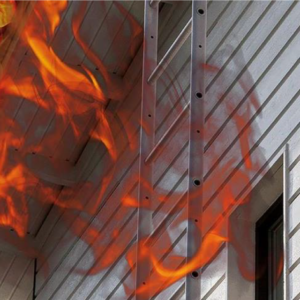Wood is a popular choice for building material because of its strength, aesthetic, acoustic and thermal qualities. It also has a lower environmental impact when compared to eg. concrete. When measured over its lifetime —from harvest through manufacturing, transportation, installation, use, maintenance and disposal or recycling— wood requires less energy and produces less carbon dioxide than concrete. However, its use in certain types of buildings may be limited by fire-prevention regulations. There are several ways to protect wooden surfaces against fire, and using fire retardant products is one of them.
Wood/Fire Protection
Wood is a popular choice for building material because of its strength, aesthetic, acoustic and thermal qualities. It also has a lower environmental impact when compared to eg. concrete. When measured over its lifetime —from harvest through manufacturing, transportation, installation, use, maintenance and disposal or recycling— wood requires less energy and produces less carbon dioxide than concrete. However, its use in certain types of buildings may be limited by fire-prevention regulations. There are several ways to protect wooden surfaces against fire, and using fire retardant products is one of them.
Showing all 2 results




